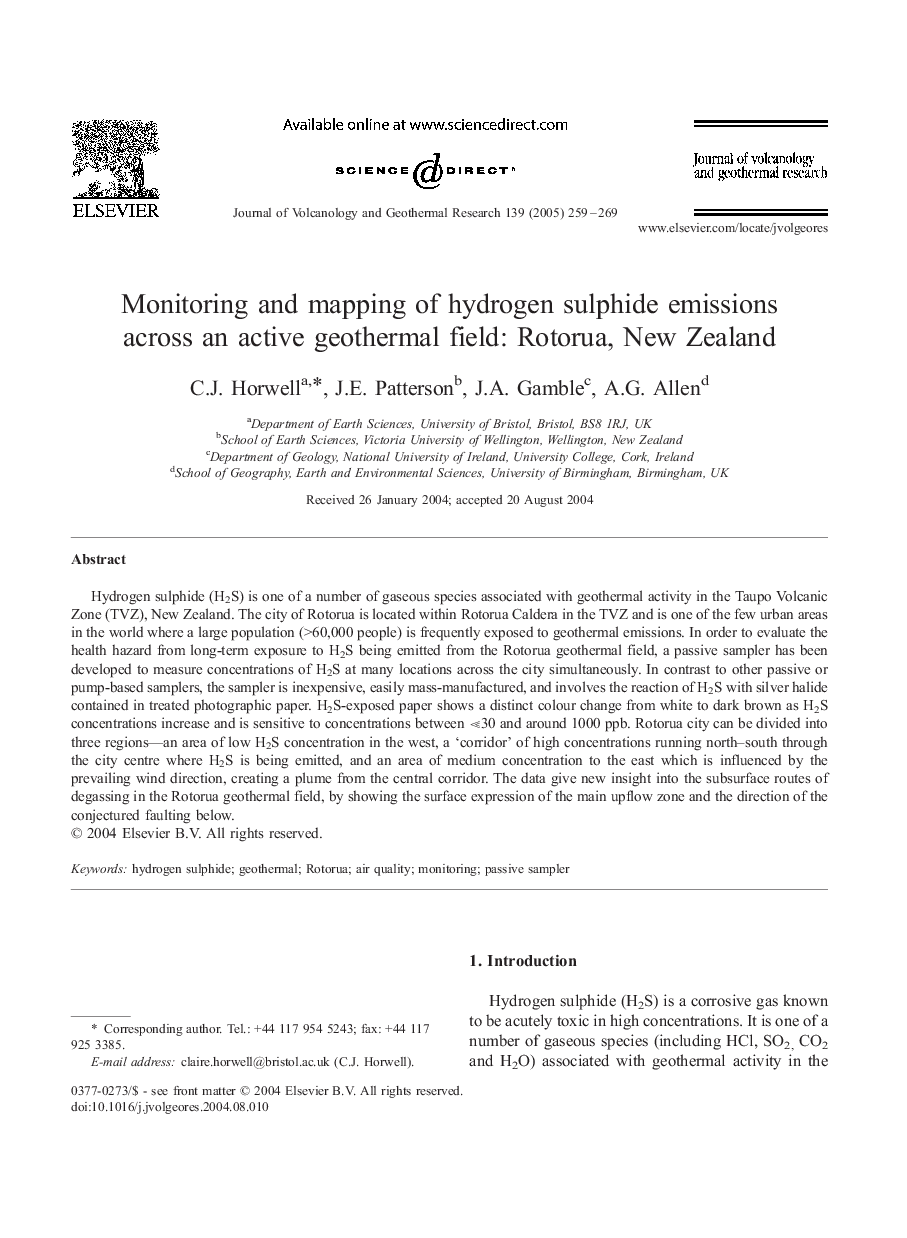| Article ID | Journal | Published Year | Pages | File Type |
|---|---|---|---|---|
| 9531683 | Journal of Volcanology and Geothermal Research | 2005 | 11 Pages |
Abstract
Hydrogen sulphide (H2S) is one of a number of gaseous species associated with geothermal activity in the Taupo Volcanic Zone (TVZ), New Zealand. The city of Rotorua is located within Rotorua Caldera in the TVZ and is one of the few urban areas in the world where a large population (>60,000 people) is frequently exposed to geothermal emissions. In order to evaluate the health hazard from long-term exposure to H2S being emitted from the Rotorua geothermal field, a passive sampler has been developed to measure concentrations of H2S at many locations across the city simultaneously. In contrast to other passive or pump-based samplers, the sampler is inexpensive, easily mass-manufactured, and involves the reaction of H2S with silver halide contained in treated photographic paper. H2S-exposed paper shows a distinct colour change from white to dark brown as H2S concentrations increase and is sensitive to concentrations between âª30 and around 1000 ppb. Rotorua city can be divided into three regions-an area of low H2S concentration in the west, a 'corridor' of high concentrations running north-south through the city centre where H2S is being emitted, and an area of medium concentration to the east which is influenced by the prevailing wind direction, creating a plume from the central corridor. The data give new insight into the subsurface routes of degassing in the Rotorua geothermal field, by showing the surface expression of the main upflow zone and the direction of the conjectured faulting below.
Related Topics
Physical Sciences and Engineering
Earth and Planetary Sciences
Geochemistry and Petrology
Authors
C.J. Horwell, J.E. Patterson, J.A. Gamble, A.G. Allen,
